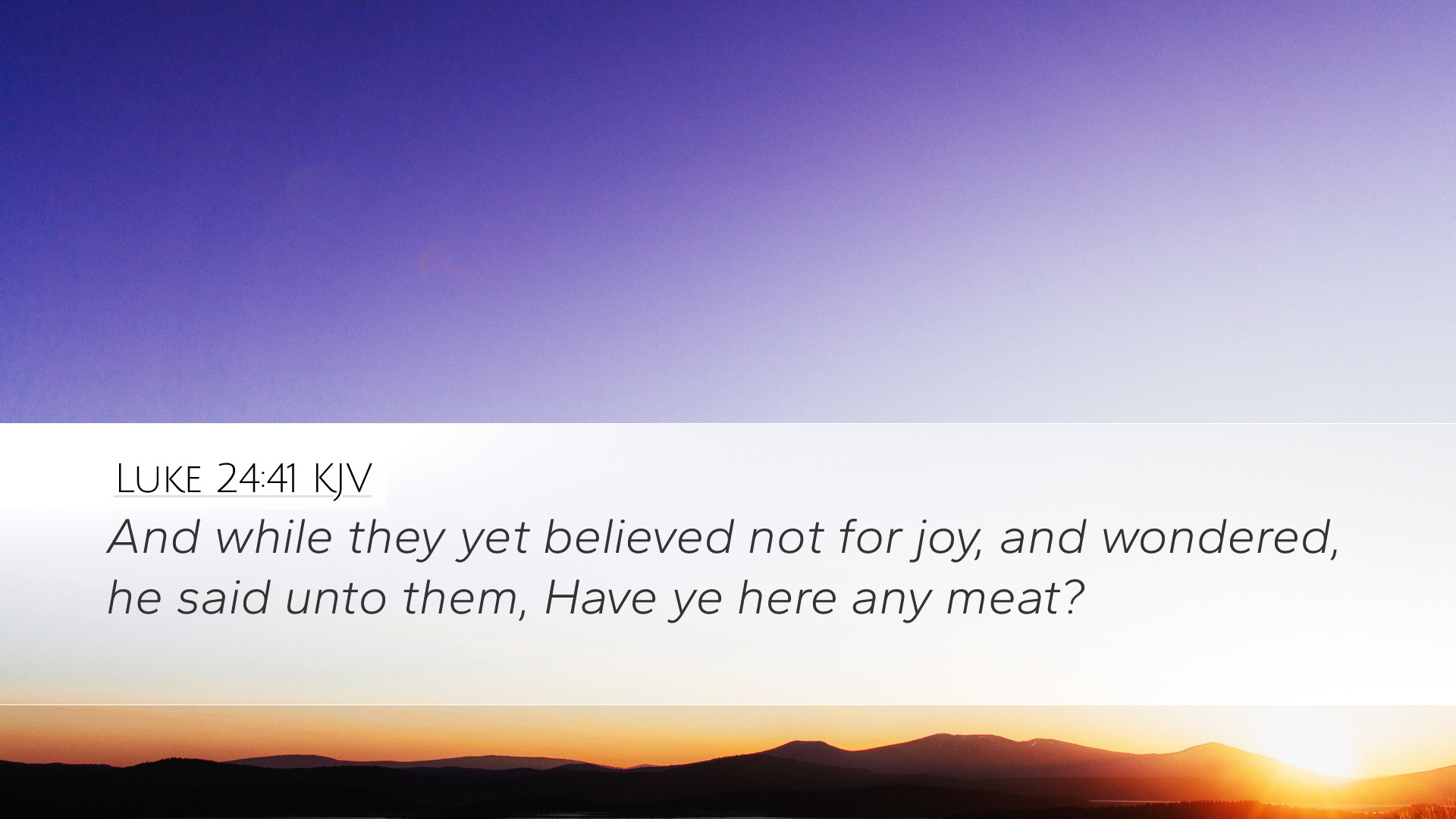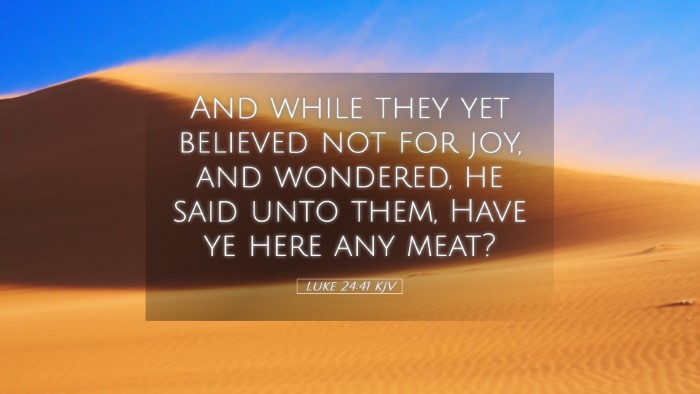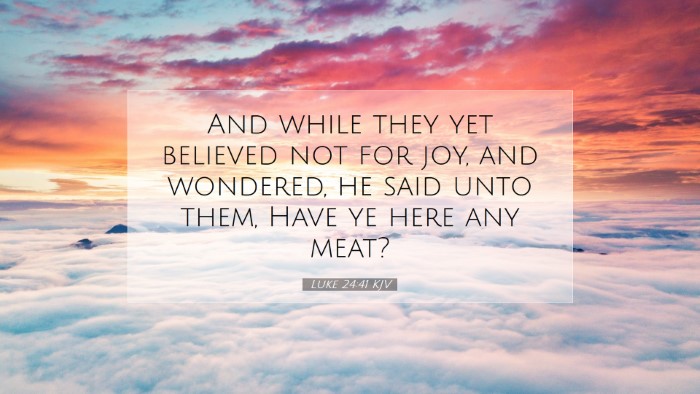Commentary on Luke 24:41
Luke 24:41 states: “And while they yet believed not for joy, and wondered, he said unto them, Have ye here any meat?” This passage carries with it profound theological implications and reflects the emotions and doubts of the disciples following the resurrection of Christ. The verse encapsulates the moment of transition from disbelief to faith and underscores several key themes relevant to pastors, students, theologians, and Bible scholars alike.
Contextual Background
To fully appreciate Luke 24:41, it is crucial to examine the broader context in which it appears. After Christ's resurrection, He appeared to two disciples on the road to Emmaus. Their hearts burned as He explained the Scriptures concerning Himself (Luke 24:32, 36-37). Upon returning to Jerusalem, they reported their encounter to the eleven remaining disciples, who were initially skeptical. Luke's narrative emphasizes both the astonishment and doubt experienced by His followers in the wake of His miraculous resurrection.
Emotional Complexity of the Disciples
The phrase “while they yet believed not for joy” conveys a significant emotional tension. The disciples were caught in a web of joy intertwined with disbelief. Matthew Henry notes that their joy overwhelmed their reason, leading to a short-lived incredulity. Rather than mocking their doubt, it shows a glimpse of the human heart struggling to reconcile the reality of the resurrection with their previous experiences of loss and despair.
Human Experience of Joy and Doubt
This dichotomy of joy and doubt is a deeply human experience. Albert Barnes points out that this moment reflects the struggles of faith. In a similar way, believers today often find themselves in situations where overwhelming joy clashes with the remnants of doubt. This passage encourages an understanding of the necessity of faith, even when joy seems to cloud one’s reason.
Christ’s Gentle Affirmation
Following their disbelief, Jesus asks, “Have ye here any meat?” This inquiry holds profound significance. Adam Clarke emphasizes that this was not merely a request for food; rather, it was Christ's way of proving His physical resurrection. By asking for something to eat, He provided tangible evidence of His bodily resurrection, thereby reassuring the disciples of the reality of His presence.
Physical Evidence of Resurrection
The act of eating in their presence also has theological implications. Clarke suggests that it emphasizes the reality of Christ's physical body. This contradicts any notions of a merely spiritual resurrection that some Gnostic sects proposed. Christ’s invitation to share a meal thus reinforces the belief in His physical resurrection and the promise of bodily resurrection for all believers.
Spiritual Implications of the Resurrection
While the physical proof of Christ's resurrection is essential, it also opens the door to understanding deeper spiritual truths. Henry comments on the resurrection as the foundation of Christian faith. The fact that Christ triumphed over death serves as the cornerstone of the believers' hope. It allows them to approach God without fear, having confidence in the atoning work of Christ.
Encouragement for Believers
For pastors, this passage serves as a powerful encouragement in their ministry. They can remind congregants that doubt does not disqualify them from faith. Just as the disciples moved from confusion to clarity, so too can modern believers navigate their doubts and experiences. Moreover, the act of sharing a meal with the risen Christ signifies the intimate relationship that believers can have with Him—a communion that transcends physical presence.
Final Reflections on Luke 24:41
In conclusion, Luke 24:41 offers rich insights into the intersection of joy, doubt, and faith in the life of a believer. Commentaries from Henry, Barnes, and Clarke affirm that this verse not only details a historical event but also resonates deeply with the spiritual journey of all who seek God. The Scriptures invite readers to embrace their complexities while assuring them of Christ’s tangible presence among them.
Key Takeaways
- Joy and doubt coexist in the journey of faith.
- Christ’s resurrection is both a physical and spiritual reality.
- Believers can find reassurance and hope in Christ’s presence.
- Faith can grow amidst confusion and uncertainty.


